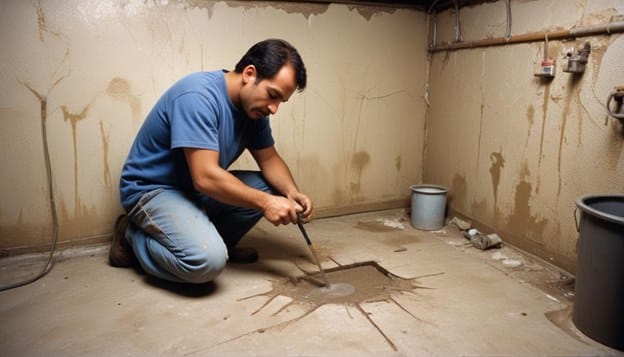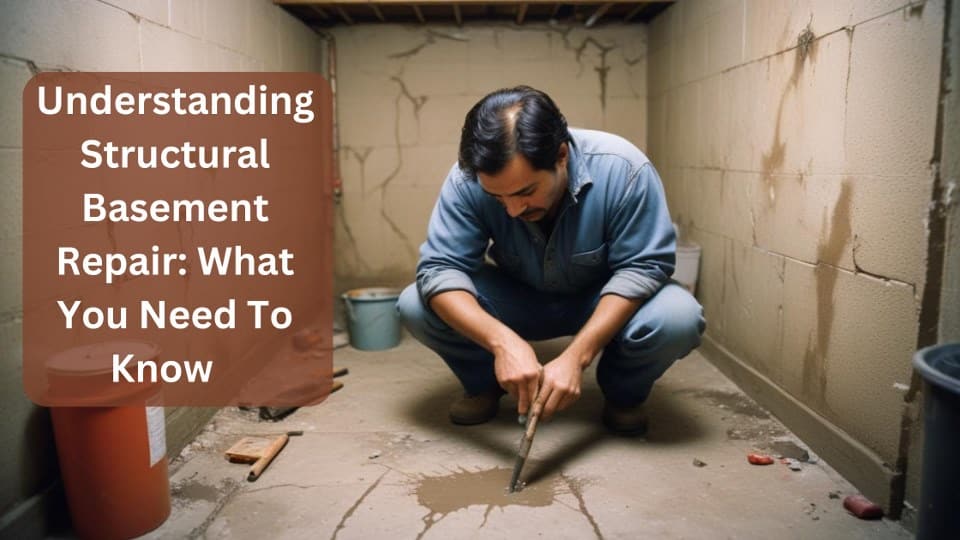If you live in Philadelphia, you already know how common it is to come across structural basement damage.
But do you know why it is so?
The main cause of all the basement damage is Philadelphia’s humid climate and its proximity to the Atlantic Ocean.
Having said that, a damaged foundation is a serious threat to a building’s stability. Hence, it’s vital to identify the causes of damage in advance and get the basement repaired in time to avoid accidents.
However, due to a lack of awareness, the building owner fails to identify any signs of damage in the basement, which increases the intensity of the damage over time.
So, before it gets too late, understand the structural basement issues and repair methods discussed in this blog.
Recognizing the Warning Signs of Foundation Problems

Before you decide on the type of structural basement repair needed, it is vital to determine the signs and understand the nature of the issue. You can begin by analyzing the signs discussed in the rundown.
1. Sticking doors and windows
Suppose you experience difficulty opening the doors and windows of the basement. In that case, it simply means that moisture has already taken a toll on the surroundings of the doors and the windows.
2. Uneven or sloping floors
An uneven floor is another sign to look for besides the cracks. You can notice bumps in the floor, resulting from swelling in the soil underneath the foundation.
3. Wide or Uneven Cracks In the walls, floor or foundation
The first sign you must look for is the cracks in the basement’s walls and floor.
If cracks are very thin, usually less than 1/16 inch wide, you need not worry. However, if cracks are wider and run along vertically, horizontally, or diagonally, you must inspect them further, as they indicate serious damage to the basement.
4. Walls Of Basement Bowing Outward
Bending or sagging walls are another thing to be aware of. An essential sign of strain from the soil outside is inward-leaning walls. If this is not resolved right away, structural failure may result.
5. Damp floors and Walls
Any indications of water flow, such as signs of dampness, water patches on the walls or floor, or chalky deposits on the basement wall or floor, should be cause for alarm.
Uncovering the Hidden Causes of Structural Basement Damage

Identifying the signs of basement damage is not enough, for you must also know what leads to them.
Here is the list of causes for basement damage.
1. Water Damage
Improper draining systems, dripping from the water pipes, and occurrence of floods lead to penetration of water beneath the basement floor and walls. This eventually causes soil erosion and the appearance of cracks on the floors and walls of the building.
2. Soil Condition
The nature of the soil plays a significant role in the stability of the basement. Expansive soil has low bearing capacity, low shear strength, and high water absorbability. The low bearing capacity leads to structural problems such as cracks.
Moreover, when the soil absorbs water, it swells and puts pressure on the basement floor, leading to bumps.
3. Poor Construction
The materials and technology used in the construction of a basement are vital factors in determining its strength. Hence, the use of substandard materials, insufficient reinforcement, and lack of water-proofing measures can compromise the strength of the basement.
4. Extended Tree Roots
The trees near your building can also threaten the basement structure. As the tree roots grow and spread underneath, they penetrate the basement foundation and put pressure on it, leading to cracks.
Innovative Approaches to Repairing Basement Structures

After analyzing the signs and causes of basement structural issues, it’s time to work with professionals and undergo any basement repair. There are many ways to repair the basement, depending on the causes.
1. Install Interior Drainage system
If you want to keep moisture away from the interior of the basement, it is best to install an interior drainage system.
This drainage system is installed along the inside perimeter of the wall and collects water that seeps in through the walls and floor. The collected water is directed to the sump pump, which takes the water away from the basement.
Another reason to install the interior drainage system is its cost-effectiveness, which depends on the cause of the leakage and the size of the affected area.
2. Applying Water-proof Coating
One of the most economical solutions to add extra layers of protection for your basement walls and floors is applying water-proof coating. This is particularly effective in old homes with porous walls and floors.
At present, there are two water-proof coating solutions.
- Water-proof concrete sealer
Epoxy coating is a mix of resin and hardener, whereas water-proof concrete sealers are made of acrylic.
4. Install Sump Pumps
Water can be moved from your basement to the exterior with a sump pump. A sump is a formed pit, typically a hollow excavated beneath the basement floor’s main surface. This basin-like pit houses the sump pump.
Furthermore, the pump is fitted with valves that detect increases in pressure or water levels. Upon activation, sump pumps automatically use a discharge pipe to remove extra water from the basement and away from your property when the water level becomes too high.
5. Carbon Fiber Reinforcement
Carbon fiber reinforcements are an innovative and successful technique for repairing basement foundations. Applying carbon fiber sheets or fabric glued with epoxy resin is a solid, unobtrusive fix for fractures or bowing walls.
Identify Ontime to Choose the Best Repair Solution
The basement is the most essential section of a building as it keeps the whole structure together and strengthens it. Hence, keeping it in perfect condition is vital.
Nevertheless, numerous factors, such as poor construction, can deteriorate the basement’s condition. This can lead to cracks, dampness, and bumps in the walls and floor. Identifying such basement issues on time can prevent further worsening of the basement structure.
Once you identify the issue, you can choose any of the abovementioned solutions to repair the basement. To get the best results, you can also seek help from experts.


